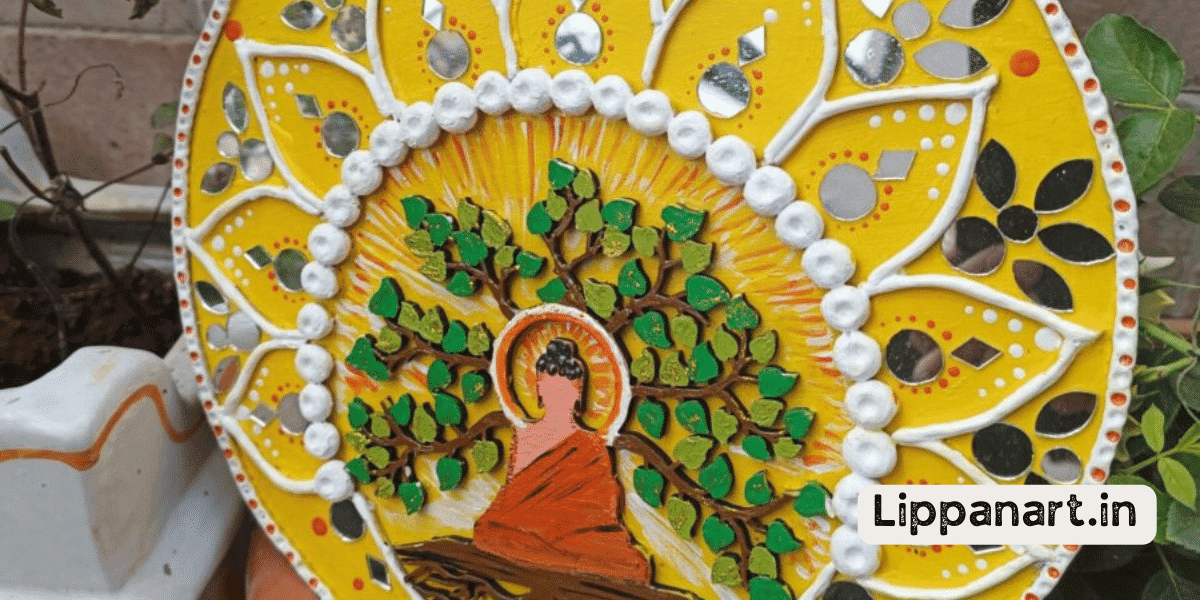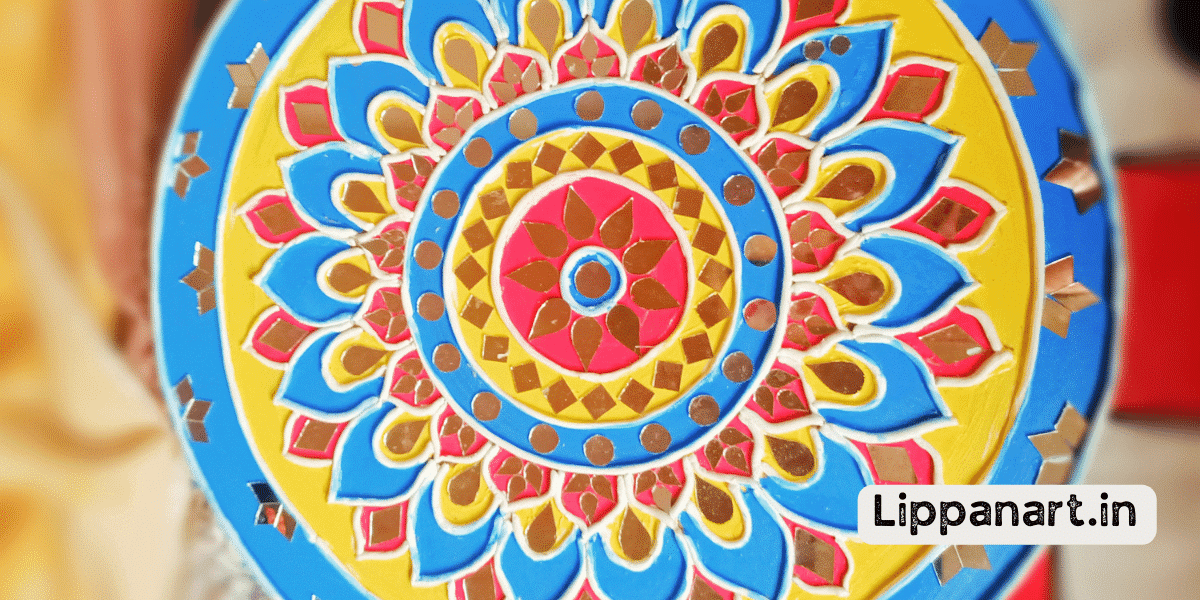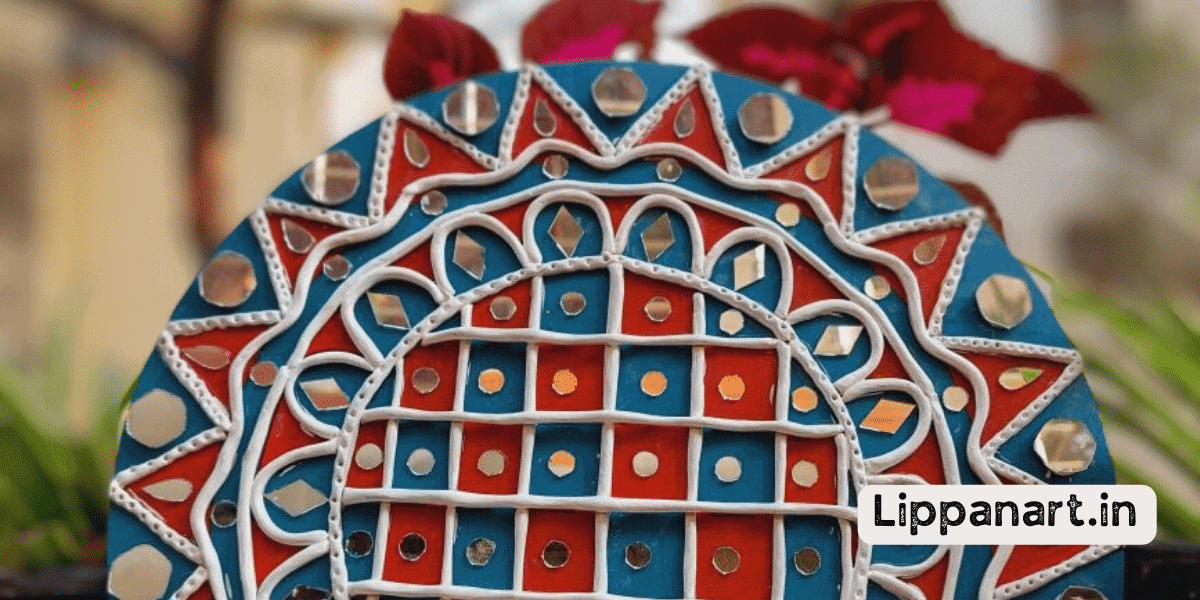Art has long used mirrors to reflect more than just a physical image. From self-reflection to hidden realities, the symbolic power of mirrors has been used to create striking imagery that captivates and intrigues.
Drawing from psychological and cultural perspectives, this article will explore how mirrors represent concepts of identity, perception, vanity, truth, and artistry.
Explore what mirrors symbolise in art and how these symbols can be used to create dynamic works of art.
Key Takeaways
- Mirrors symbolise truth, reality, and self-identity in mythology
- Mirrors create interesting illusions in art and reflect the subject in a distorted or unexpected way, exploring the complexity of identity and the fragility of truth
- Mirrors are commonly used as a symbol of vanity and are often used in contemporary art to explore themes of vanity and narcissism
- Mirrors serve as a tool for self-reflection and understanding our ego, allowing us to develop a balanced relationship. They also create diverse perspectives in art, prompting viewers to question the relationship between subject and environment and encouraging exploration and new perspectives.
Reflections of Self-Identity
Mirrors often symbolise a reflection of one’s self-identity. In mythology, mirrors have been used to represent truth and reality and to explore the inside and outside of the individual. Mirrors can be interpreted as a way to discover one’s inner self and understand how those around them perceive one’s identity. The symbolism of a mirror can be seen in art as a way to express the idea of reflections and relationships between the individual and society.
The mirror has been used to represent the complex relationship between the individual and society. It can be used to explore the transformation and emergence of the self about others and reflect upon the idea of identity. In art, mirrors can be used to represent the individual’s journey of self-discovery and to explore the idea of personal identity within the context of society.
The symbolism of the mirror can be seen in the art of many cultures, from ancient times to the present. It is a powerful symbol used throughout history to explore the nature of identity and self-reflection. By examining the use of mirrors in art, we can gain insight into how individuals have explored their identity throughout the ages and how these reflections have shaped our understanding of self-identity.
Illusion and Perception
You’re likely aware that illusion and perception play an important role in art. Mirrors have been used to create interesting illusions, often with symbolic meanings. Appearances can be deceiving, and the idea of reality and our perceptions can be manipulated.
This is often seen in artwork involving mirrors, which can reflect the subject in a distorted or unexpected way. Mirrors can be used to symbolise various ideas, such as the complexity of identity, the concept of duality, or the fragility of truth. They can also create an atmosphere of mystery or explore the idea of time and its ever-changing nature.
Mirrors can represent the idea that what we see in the world only reflects our perception. The symbolic meaning of mirrors in art encourages the audience to look beyond the objects’ surface and explore the artwork’s deeper meanings.
Symbol of Vanity
Mirrors often symbolise vanity, reflecting our preoccupation with outward appearances. In art, mirrors are often used to explore different themes, such as:
- Mythical Times:
- Mythology often uses mirrors to describe allegories and stories, such as Narcissus in Greek mythology.
- Mirrors are also commonly used in fantasy artwork to represent a portal to another world.
- Contemporary Times:
- In contemporary art, mirrors explore themes of vanity and narcissism.
- Artists often use mirrors to confront the audience with their reflections.
Overall, mirrors have been used in art for centuries and are often used as a symbol of vanity and narcissism. Mirrors in art can challenge viewers to reflect on their self-image and how they view themselves in relation to the world around them.
Metaphor for Truth
You can metaphorically reveal the truth about yourself and the world using a mirror. Mirrors have been used throughout centuries as symbols of truth, reflecting the innermost aspects of a person or a situation. They have been used to depict physical and mental and are often found in art and literature to represent a person’s inner truth. In Greek Mythology, Narcissus became obsessed with his reflection in a pool of water, unable to escape the power of his truth. This story has been used to illustrate the idea that mirrors can be used to reveal truths about ourselves that we may not want to face.
| Centuries | Symbolism of Mirrors | True Reflection | |
|---|---|---|---|
| 1 | Ancient | Representation of | Inner Truth |
| 2 | Medieval | Reflections of | Self-Awareness |
| 3 | Renaissance | Portal to | Reflection of |
| 4 | Modern | Symbol of | Concepts |
| 5 | N/A | Greek Mythology | Reality |
The symbolism of mirrors has evolved over the centuries, with different cultures ascribing different meanings to them. In Ancient Greece, mirrors were seen as a representation of the inner truth; in the Middle Ages, they were seen as reflections of self-awareness; in the Renaissance, mirrors were seen as a portal to another reality; and in the modern era, mirrors are often used as symbols of concepts such as vanity or truth. Mirrors are also often associated with Greek Mythology, where they are used to illustrate the idea that our true reflection can sometimes be hard to face.
In art, mirrors are often used to represent truth and explore the human condition’s complexities. They can be used to depict a person’s innermost thoughts, feelings, and motivations and represent the truth of a situation. An artist can create a powerful visual representation of the truth and its complexities through mirrors. Mirrors can symbolise truth and its many facets, offering a unique perspective on life and reality.
- Editor’s Choice
- Best Seller
- Amazon Choice
Ego and Self-Reflection
Reflecting on ourselves through mirrors can reveal the ego and how it shapes our self-reflection. Mirrors symbolise ego in art, from the Narcissus of Greek Mythology to Vanitas artwork. Narcissus, for example, was a youth of great beauty who was so enamoured with himself that he fell in love with his reflection in the river.
In terms of art, mirrors have been used to symbolise self-recrimination, showing a person’s flaws and imperfections and highlighting the vanity of human nature. They also serve as a tool for imagining a world of possibilities and re-envisioning the self within a new context.
Mirrors in art allow us to explore our ego and understand the concept of self-reflection. It can show us how our ego can lead us to create an alternative reality. By reflecting on ourselves, we can better understand our innermost thoughts and emotions while seeing our flaws and imperfections. This understanding can help us develop a more balanced and healthy relationship with our ego.
Multiplicity of Perspectives
Mirrors in art have long been associated with self-reflection and ego. However, for contemporary art historians, mirrors symbolise much more. Within the art world, mirrors can be used to create a diversity of perspectives. This allows the viewer to become immersed in the painting or sculpture, ultimately developing a deeper understanding of the artwork.
This type of art can be seen at the National Portrait Gallery in London. Here, artworks by renowned artists from the 20th-century art movement are displayed. Mirrors create an illusion of space, prompting the viewer to question the relationship between the subject and the environment.
Art historians suggest that this type of art enables the viewer to contemplate the relationship between the artist, the artwork, and the viewer. It ultimately allows for the interpretation of the artwork uniquely. Mirrors become a means of understanding the artwork from multiple perspectives, allowing the viewer to form their interpretations.
Surreal and Dreamlike Worlds
Mirrors often provide a surreal and dreamlike quality to art, allowing viewers to enter imaginative and unknown worlds. This quality symbolises truth, helping viewers look deeper into the artwork beyond the surface-level appearances.
The use of mirrors invites viewers to question their reality and look for a deeper truth:
A symbol of truth:
- Reflection of an inner self
- Represents a deeper reality
A tool to question reality:
- Explore an alternate universe
- Challenge the perception of reality
In the artwork Vanitas, the presence of a mirror symbolises mortality, vanity, and the passage of time. This symbol effectively reminds viewers of life’s transience and encourages them to be mindful of their actions.
By using a mirror in art, viewers can better understand the artwork and its message. It encourages exploration and creativity, allowing viewers to experience new perspectives and realities.
Mirrors serve as a powerful tool for creating surreal, dreamlike worlds that challenge conventional thinking.
Mystery and Hidden Realities
Mirrors can help unlock the mysteries and hidden realities that lie beyond the surface by providing a glimpse into unknown realms of reality. The reflective qualities of convex mirrors, glass mirrors, and sky mirrors can be used to explore a variety of hidden phenomena, from an individual’s physical appearance to the reflection of objects in the sky.
For example, a convex mirror can reveal a situation’s ‘bigger picture’ by providing a wider field of view. Similarly, glass mirrors can be used to explore the hidden depths of one’s reflection, while sky mirrors can help uncover the mysteries of the night sky.
Mirrors can also be used to create a sense of mystery in artwork. By reflecting a slightly distorted or incomplete image, the artist can draw attention to the hidden realities beneath the surface. Through the use of mirrors, the artist can explore the idea of a ‘mirror image’, where the reality of a situation can be seen differently.
Ultimately, mirrors can be used to unlock the hidden realities of the world, providing an avenue for creative exploration and innovation.
Cultural Symbolism in Art
You can use mirrors in art to symbolise culturally significant ideas and concepts. For example, the 1434 painting, ‘The Arnolfini Portrait’ by Jan van Eyck, currently in the Museo del Prado, may be interpreted as a symbol of marriage. It contains two figures standing in front of a convex mirror, a symbol of the Magic Mirror of the mythological Snow White. This interpretation of the convex mirror suggests a duality, the two figures representing a single unit, while the mirror symbolises the infinite possibilities of married life.
Mirrors in art can also symbolise other culturally significant ideas, such as:
- Reflection
- Introspection
- Self-knowledge
Mirrors can also symbolise the passage of time, reflecting a moment that has already passed. It can also reflect the present and hint at the future. In this way, mirrors can symbolise the ever-changing nature of life and the unstoppable flow of time.
Artistic Self-Expression
The use of mirrors in art to express one’s identity or to explore the concept of self-expression has been explored since the sixteenth century. In the modern world, mirrors are often used to explore the ideas of personal identity, emotional expression, and even gender fluidity. Mirrors are also used to create a sense of movement within a gallery. A well-known example is Anish Kapoor’s Cloud Gate, which is a massive, polished obsidian sculpture in Chicago’s Millennium Park. The reflective, curved surface of the sculpture creates a captivating effect, allowing viewers to become part of the artwork.
Mirrors can also be used to explore the concept of self-reflection. A mirror can be seen as a gateway to exploring one’s inner world, allowing viewers to reflect on their emotions and experiences. This type of artwork can be used to express feelings of introspection, vulnerability, and self-awareness. By incorporating mirrors into artwork, artists can create a powerful and meaningful form of self-expression.
| Mirror Art | Meaning |
|---|---|
| Anish Kapoor’s Cloud Gate | With the captivating effect, viewers become part of the artwork |
| Reflection | Gateway to exploring inner world, feelings of introspection, vulnerability |
| Movement | Create a sense of movement within a gallery |
Conclusion
In conclusion, mirrors have been used throughout art history to symbolise many things. They represent vanity, truth, ego, self-reflection, surreal, dreamlike worlds, hidden realities, and culturally symbolic messages. Mirrors are a unique way to express oneself and help us explore the depths of our imagination.














